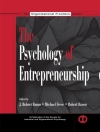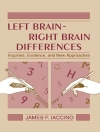In 1964, the release of Dr. Bernard Rimland’s book, Infantile Autism, revolutionized the autism field by providing the autism community with much-needed guidance on how to understand and treat individuals on the spectrum. He single-handedly realigned the field from a psychodynamic, parent-blaming perspective to a scientific, physiological course of action. This 50th anniversary edition presents the original book with contributions from leaders in the autism field, including Drs. Martha Herbert and Simon Baron-Cohen, who celebrate Dr. Rimland’s exceptional work, and place his findings within the context of autism as we understand it today.
Bringing Dr. Rimland’s findings up to date for a new generation of readers, this book will be fascinating reading for parents and those on the autism spectrum as well as professionals working with autism and anyone with an interest in autism and/or psychological theory.
สารบัญ
Foreword to the New Edition. Margaret L. Bauman, M.D, Department of Anatomy and Neurobiology, Boston University School of Medicine, Integrated Center for Child Development, Newton, Massachusetts, US. Foreword to the New Edition. Temple Grandin, Ph.D, autism advocate and Associate Professor of Animal Science, Colorado State University, US. Introduction to the New Edition. Stephen M. Edelson, Ph.D, Director, Autism Research Institute, US. Foreword by Leo Kanner. Preface. General Introduction. Introduction to Part I. The Controversies and their Resolution: A Critical Analysis of the Literature. Introduction to Chapter 1. Stephen M. Edelson. 1. The Syndrome of Early Infantile Autism: Background, Course, Diagnosis and Prognosis. A. Background. B. Course and Symptom of the Disease. C. Prognosis. D. The Diagnosis of Autism. Introduction to Chapter 2. Stephen M. Edelson. 2. The Parents of Autistic Children. Parent Occupations. Stephen M. Edelson. Introduction to Chapter 3. Stephen M. Edelson. 3. The Etiology of Infantile Autism: The Problem of Biological versus Psychological Causation. A. The Arguments for Psychogenesis of Infantile Autism. B. The Case for Biological Causation. C. Psychogenesis as an Inadequate and Pernicious Hypothesis. A Commentary on Chapter 3. Robert K. Naviaux, M.D., Ph.D., Professor of Genetics, Department of Medicine, Pediatrics, and Pathology, University of California, San Diego School of Medicine, US. Introduction to Chapter 4. Stephen M. Edelson. 4. The Differentiation of Early Infantile Autism from Childhood Schizophrenia. Introduction to Part II. A Theory of Autism: Its Nature and Cause. Introduction to Chapter 5. Stephen M. Edelson. 5. Autism as a Cognitive Dysfunction. A. The Conceptual Impairment. B. A Hypothesized Relationship Between the Cognitive Dysfunction in Autism and the Reticular Formation of the Brain Stem. Cognitive Dysfunction: Impairment in Memory. Stephen M. Edelson. Introduction to Chapter 6. Stephen M. Edelson. 6. The Specific Biology of Infantile Autism: Sensory Phenomena, Psychopharmacology, Autopsy Reports and Hyperoxia as Related to the Reticular Formation. A. The Reticular Formation and Perception. B. Psychopharmacology. C. Autopsy Findings and Other Attempts to Determine the Organic Basis of Autism. D. Hyperoxia as a Possible Causative Factor. E. Discussion. Reflections on Bernard Rimland and the 50th Anniversary of Infantile Autism. Paul Millard Hardy, M.D., Hardy Healthcare PLLC, US. Rimland’s Contributions: The Role of Sensory Processing Challenges in Autism Spectrum Disorders. Lucy Jane Miller, Ph.D., OTR, Clinical Director, Sensory Therapies And Research (STAR) Center and Research Directory, Sensory Processing Disorder (SPD) Foundation, US. Matthew S. Goodwin, Ph.D., Assistant Professor, Department of Health Sciences, Northeastern University, US. Jillian C. Sullivan, Sensory Processing Disorder (SPD) Foundation, US. Vitamin B6. Jon B. Pangborn, Ph.D., Former Consultant to the Autism Research Institute and Co-Founder of “Defeat Autism Now”, US. Introduction to Chapter 7. Stephen M. Edelson. 7. The Theory: Integration and Support. A. The Inheritance of Intelligence and its Biological Substrate. B. The Paradoxes of Intelligence. C. The Hypothesis of Oxygen Intolerance and the Cerebral Vasculature. Introduction to Chapter 8. James B. Adams, Ph.D., Director, Autism/Asperger’s Research Program, Arizona State University, US. 8. Ideas for Research. A. Diagnosis. B. Etiology. C. Therapy and Training. D. Broader Implications of Research on Autism. The Fetal Steroid Theory of Autism. Simon Baron-Cohen, Ph.D., Autism Research Centre (ARC), Cambridge University, UK. Bonnie Auyeung, Ph.D., Autism Research Centre (ARC), Cambridge University, UK. Michael Lombardo, Ph.D., Autism Research Centre (ARC), Cambridge University, UK. Wisdom and Vision: A Comment on Rimland’s Concept of “Training” for Children with Autism. V. Mark Durand, University of South Florida, St. Petersburg, US. Relevance to Modern Biomarker of Autism. Richard E. Frye, M.D., Ph.D., University of Arkansas for Medical Sciences, Arkansas Children’s Hospital, US. Introduction to Part III. Some Possible Implications for the Theory of Autism for a Theory of Behavior. Introduction to Chapter 9. Stephen M. Edelson. 9. Some Implications of Early Infantile Autism for the Study of Personality. A. Emotion and Parental Personalities. B. Drive and the Parental Personalities. C. Cyclothymia, Schizothymia, and the Parental Personalities. D. The Relationship Between Autism and Schizophrenia: A Hypothesis. Introduction to Chapter 10. Stephen M. Edelson. 10. Further Implications of the Study of Autism. A. The Abilities of Autistic Children. B. Distractability, Concentration, and Intelligence. C. Delayed Mental Audition. D. The Problem of Innateness of the Specific Affective Disturbance. Special Abilities and Savant Syndrome: An update on Dr. Rimlands observations. Darold A. Treffert, M.D., Behavioral Health, Agnesian Health Care, Wisconsin, US. Introduction to Chapter 11. Stephen M. Edelson. 11. Some Implications of Early Infantile Autism for a Theory of Behavior. A. A Hypothesis Concerning Reticular Function. B. Toward a Neuron Entelechy Theory of Cognition. Rimland’s Reticular Formation Theory of Autism in the Light of 50 Years of Brain Research. Martha R. Herbert, Ph.D., M.D., Assistant Professor of Neurology, Harvard Medical School, US. Appendix. Suggested Diagnostic Check List. Appendix. The Invisible Wall. Stephen M. Edelson. Appendix. Environmental Vulnerability and Everday Epigenetics: Empowering Treatment and Recovery. Martha R. Herbert. Appendix. Mark Rimland: An inspiration to us all. Stephen M. Edelson. Afterword. Sidney M. Baker, Ph.D., Coordinator of the Autism Database Project for the Autism Research Institute. Bibliography. Name Index. Subject Index.












